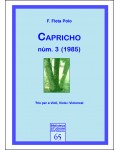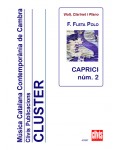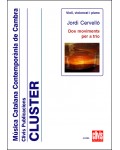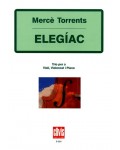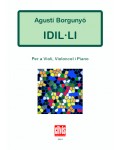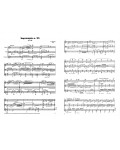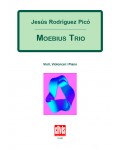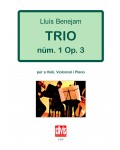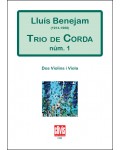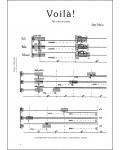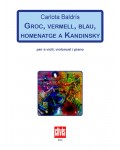
No products
Prices are tax included
Product successfully added to your shopping cart
There are 0 items in your cart. There is 1 item in your cart.
- English
- Castellano
- Català
Violin Trios There are 12 products.
-
Capricho núm. 3 (1985)
Edition: DigitalThe initial cell of the descending arpeggio gives unity to the work that, despite its briefness, clearly shows the personality of Fleta Polo’s language and his deep knowledge of the different instruments he writes for.
10,47 € -
Caprici núm. 2
Edition: DigitalIn the opening section of Caprici núm. 2 by F. Fleta Polo the instruments are presented one by one through the use of solo parts, before merging to form the chamber piece proper, and the contrapuntal writing can be seen throughout in a piece whose appeal lies in its contrasts in colour and character.
9,30 € -
Dos moviments per a trio
Edition: DigitalTwo movements for trio (violin, cello and piano) is one of the first works which Jordi Cervelló has composed, in 1968. The two movements are Adagio and Allegro energico.
12,58 € -
-
Graffiti
Edition: DigitalThe content of the work Graffiti revolves around the desolation in which modern society lives because of habits imposed by a few people exercising power. In a way, graffiti art expresses this rebellion against the system, creating a world of fantastic graphics to escape the oppression of everyday life.
11,92 € -
Idil·li
Edition: DigitalThe Idil·li per a trio (violin, cello and piano) by Agustí Borgunyó is a short work of less than six minutes and yet it is full of intensity, lyricism and expressive power.
7,56 € -
-
Moebius Trio
Edition: DigitalThe piece Moebius Trio by Rodríguez Picó includes the peculiar properties of the Moebius looped strip by using themes predominantly built up around long notes that give a feeling of a flat yet wavy surface, and by linking the different parts as if always bringing us back to the beginning again.
11,34 € -
Trio no. 1 Op. 3
Edition: DigitalTrio for violin, cello and piano no. 1 by Lluís Benejam is structured into four movements, has a duration of nearly twenty minutes and an optimistic, romantic feel.
18,15 € -
String trio no. 1
Edition: DigitalIn his String Trio No. 1 (1956) Lluís Benejam plays with the sounds of two violins and a viola from a classical premise yet with a modern spirit.
18,15 € -
-

